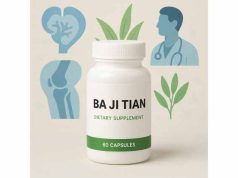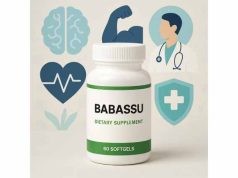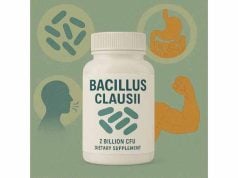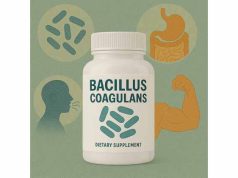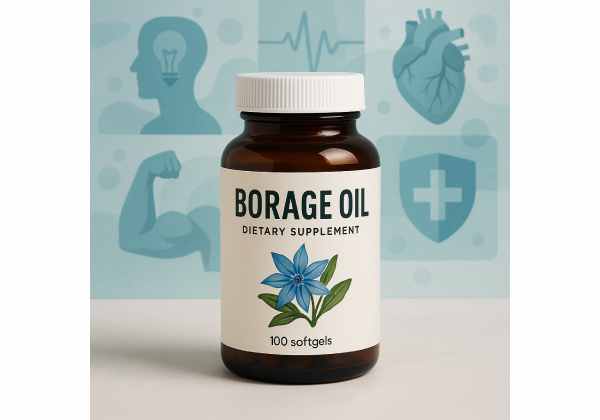
Borage oil is an increasingly popular supplement recognized for its rich content of gamma-linolenic acid (GLA), a special omega-6 fatty acid with significant health benefits. Extracted from the seeds of the borage plant (Borago officinalis), this oil is widely used to support skin hydration, joint comfort, hormonal balance, and heart health. It stands out from other plant oils due to its unique GLA concentration—often higher than evening primrose or black currant oil—making it a favorite among those seeking natural anti-inflammatory support and smoother, more resilient skin. Whether you’re interested in improving skin conditions, easing PMS symptoms, or promoting overall wellness, borage oil offers a science-backed, plant-based solution to fit many health goals.
Key Takeaways
- Rich in GLA: Borage oil is one of the highest natural sources of gamma-linolenic acid, supporting inflammation balance and skin health.
- Skin and Joint Benefits: Promotes softer skin, relieves dryness, and may support joint comfort in adults.
- Hormonal and Women’s Wellness: Used to ease PMS symptoms, breast tenderness, and support overall hormonal balance.
- Heart and Immune Support: May help maintain healthy cholesterol levels and support immune response.
- Safe Use Guidelines: Must be sourced from reputable brands; monitor for mild side effects and avoid during pregnancy unless under medical supervision.
Table of Contents
- Borage Oil Plant Origin, Production, and Unique Properties
- How Borage Oil Works: GLA’s Biological Effects and Body Benefits
- Top Evidence-Based Benefits of Borage Oil for Health and Beauty
- Borage Oil Safety, Tolerability, Side Effects, and Important Interactions
- Borage Oil Dosage, Usage, Timing, and Best Practices
- Borage Oil FAQ: Answers to Most Asked Questions
Borage Oil Plant Origin, Production, and Unique Properties
Borage oil is derived from the seeds of the Borago officinalis plant, a hardy annual herb with brilliant blue, star-shaped flowers native to the Mediterranean but now grown worldwide. The plant, sometimes called “starflower,” has been used for centuries as a culinary and medicinal herb.
How Borage Oil Is Made
- Harvesting: Mature borage plants produce small, black seeds that are cold-pressed to extract the oil.
- Purification: Reputable manufacturers purify the oil to remove any naturally occurring pyrrolizidine alkaloids (PAs), which can be harmful if present in significant amounts.
- Concentration: The oil is standardized for GLA content, with typical concentrations ranging from 18% to 26%—higher than most other plant oils.
Key Nutritional Components
- Gamma-Linolenic Acid (GLA): The most notable nutrient in borage oil, GLA is an essential fatty acid that plays a key role in supporting anti-inflammatory pathways, cell membrane health, and hormone production.
- Other Fatty Acids: Includes linoleic acid (LA), oleic acid, and small amounts of saturated fats.
- Phytosterols and Vitamin E: Provide antioxidant activity, supporting skin and cardiovascular wellness.
What Sets Borage Oil Apart
- Highest GLA Content: Borage oil consistently contains more GLA than evening primrose or black currant oil, making it more potent for those seeking GLA’s benefits.
- Versatility: Can be used internally (capsules, softgels) or topically for skin care, either directly or as part of a blend.
- Gentle, Plant-Based Option: Suitable for vegetarians and vegans; free from common allergens if properly processed.
Borage Oil in Traditional and Modern Use
- Folk Remedies: Traditionally used to lift mood, soothe inflammation, and nourish the skin.
- Modern Supplements: Now widely available in capsules, liquid drops, and topical serums for easy incorporation into daily routines.
Who Uses Borage Oil?
- Adults seeking smoother skin, joint comfort, or natural PMS support.
- People with dry, sensitive, or eczema-prone skin.
- Individuals interested in plant-based omega-6 supplementation.
Understanding its origin and unique profile helps explain why borage oil is so popular in natural health circles.
How Borage Oil Works: GLA’s Biological Effects and Body Benefits
The real magic of borage oil comes from its exceptionally high content of gamma-linolenic acid (GLA), an omega-6 fatty acid that plays a powerful role in regulating inflammation, supporting healthy skin, and balancing hormones. Let’s break down how GLA and other nutrients in borage oil work at the cellular level.
1. GLA and Prostaglandin Synthesis
- Inflammation Balance: GLA is converted in the body to dihomo-gamma-linolenic acid (DGLA), which serves as a precursor to anti-inflammatory prostaglandins—hormone-like substances that regulate the immune response, inflammation, and blood flow.
- Joint and Skin Support: These anti-inflammatory effects help ease joint discomfort and promote skin barrier repair, making borage oil popular for arthritis and chronic skin conditions.
2. Hormonal Health and PMS Relief
- Modulates Hormonal Fluctuations: GLA supports the synthesis of key prostaglandins involved in menstrual health, potentially easing breast tenderness, bloating, and irritability during PMS.
- May Support Menopausal Comfort: Some research suggests borage oil helps manage mild menopausal symptoms due to its hormone-balancing effects.
3. Skin Hydration, Elasticity, and Barrier Function
- Restores Lipids: GLA and linoleic acid help replenish essential fatty acids in the skin, strengthening the skin barrier and improving moisture retention.
- Calms Irritation: GLA’s anti-inflammatory action soothes red, irritated, or sensitive skin, making it a favorite for eczema and dermatitis care.
- Accelerates Healing: May speed recovery from minor wounds, dryness, or sun damage.
4. Heart, Immune, and Nerve Health
- Cardiovascular Wellness: Some evidence indicates borage oil may support healthy cholesterol levels, reduce arterial stiffness, and promote vascular health.
- Immune Modulation: GLA helps maintain a balanced immune response, supporting both defense and tolerance.
- Nerve Function: Fatty acids in borage oil contribute to healthy nerve signaling and comfort.
5. How Borage Oil Differs from Other Oils
- Bioavailability: GLA in borage oil is highly bioavailable, with clinical studies supporting its rapid absorption and utilization.
- No Direct Omega-3 Activity: Unlike fish oil, borage oil does not supply omega-3s but complements omega-3-rich diets.
Who Benefits Most from Borage Oil’s Mechanisms?
- Individuals with chronic dry skin, eczema, or mild inflammatory conditions.
- Women seeking natural PMS or menopausal support.
- Adults wanting plant-based heart and immune health strategies.
Borage oil’s blend of GLA and other healthy fats delivers targeted, whole-body effects that set it apart from other seed oils.
Top Evidence-Based Benefits of Borage Oil for Health and Beauty
Borage oil has earned its reputation as a powerhouse supplement through both tradition and an expanding base of scientific studies. Here’s a closer look at the most researched and reported benefits for skin, joints, hormonal balance, and beyond.
1. Relieves Eczema, Dryness, and Sensitive Skin
- Soothes Irritation: Regular supplementation may reduce itchiness, redness, and scaling in people with eczema or dermatitis.
- Strengthens Skin Barrier: GLA restores lipid content in the skin, improving moisture retention and resilience.
- Topical and Oral Synergy: Borage oil can be used both internally and topically for comprehensive skin support.
2. Supports Joint Comfort and Flexibility
- Reduces Inflammation: Clinical studies show borage oil may ease mild joint stiffness and swelling, especially in adults with rheumatoid arthritis or similar conditions.
- Complementary to Omega-3s: Works well alongside fish oil for holistic joint care.
3. Eases PMS and Menstrual Discomfort
- Hormone Balance: Women taking borage oil report less breast tenderness, mood swings, and bloating during PMS.
- Gentle Option: Preferred by those seeking alternatives to pharmaceuticals or synthetic hormone treatments.
4. Enhances Heart and Vascular Health
- Cholesterol and Blood Pressure: Early research suggests borage oil may help support healthy lipid profiles and blood vessel flexibility, contributing to cardiovascular wellness.
- Antioxidant Protection: Phytosterols and vitamin E add to its heart-protective potential.
5. Immune and Inflammatory Balance
- Autoimmune and Chronic Conditions: While not a cure, borage oil may provide adjunctive support for those managing mild inflammatory or immune-related issues.
- Faster Recovery: Some users find their skin heals more quickly and immune responses feel more balanced with regular use.
6. Hair and Nail Vitality
- Promotes Growth and Strength: Borage oil’s fatty acids nourish hair follicles and nail beds, supporting growth and reducing brittleness.
Limitations and Considerations
- While research supports many benefits, responses are individual and best results come with consistent, long-term use.
- Not all skin or joint issues respond equally; always consider holistic health and medical input for persistent symptoms.
Who Should Consider Borage Oil?
- Adults with dry, sensitive, or mature skin.
- Women seeking natural solutions for PMS or hormonal balance.
- Those with mild joint discomfort or interested in heart and immune support.
Borage oil’s benefits span wellness and beauty, offering a gentle, plant-based solution for many everyday health needs.
Borage Oil Safety, Tolerability, Side Effects, and Important Interactions
Borage oil is celebrated for its safety and gentle effects when used as directed, but like all potent supplements, understanding its precautions and potential interactions is essential for optimal wellness. Here’s a detailed look at tolerability, possible side effects, and who should take extra care.
General Safety and Tolerability
- Well-Tolerated in Most Adults: Borage oil is safe for most healthy individuals when taken at recommended doses, especially from reputable sources that test for purity and remove harmful compounds.
- Non-Allergenic: Since it’s a seed oil, borage oil is generally non-allergenic, though those with a rare borage or seed allergy should exercise caution.
Potential Side Effects
- Digestive Upset: The most commonly reported side effects are mild and include nausea, soft stools, or an upset stomach, particularly if taken on an empty stomach or at higher doses.
- Headache or Gas: Some people may experience mild headache or flatulence initially; these effects often subside with continued use or dose adjustment.
- Rare Skin Reactions: Topical use is usually safe but may cause skin irritation in very sensitive individuals. Discontinue topical use if redness, itching, or rash develops.
Concerns Over Pyrrolizidine Alkaloids (PAs)
- Why PAs Matter: Naturally occurring in some borage plants, PAs can be harmful to the liver if consumed in significant amounts.
- Quality Assurance: Reputable supplement brands thoroughly remove or test for PAs, ensuring that finished borage oil products meet strict safety standards.
- How to Avoid Risk: Always choose borage oil supplements that specify “PA-free,” “hepatotoxic alkaloid-free,” or third-party tested for purity.
Who Should Use Caution or Avoid Borage Oil?
- Pregnant or Breastfeeding Individuals: There isn’t enough safety evidence for use in pregnancy or while breastfeeding. Some compounds could potentially stimulate the uterus or pass through breast milk—always consult a doctor before use.
- Children: Not generally recommended for children unless directed by a pediatrician or qualified practitioner.
- Liver Disease: Those with liver disorders should avoid borage oil unless under professional supervision due to the historical risk of alkaloid contamination.
- Bleeding Disorders or Surgery: GLA may theoretically affect blood clotting, so use caution if you have a bleeding disorder or are scheduled for surgery.
Potential Drug and Supplement Interactions
- Anticoagulants/Antiplatelet Medications: Borage oil might slightly increase bleeding risk when combined with blood thinners such as warfarin, aspirin, or clopidogrel. Monitor for bruising or unusual bleeding.
- Nonsteroidal Anti-Inflammatory Drugs (NSAIDs): While there’s no direct contraindication, combining borage oil with NSAIDs should be done with caution if you are sensitive or on multiple anti-inflammatory therapies.
- Seizure Medications: Very high doses of GLA (rare in supplements) may interact with some epilepsy drugs—consult a neurologist if you have seizure disorders.
Best Practices for Safe Supplementation
- Purchase PA-Free Products: Only buy from brands with clear, third-party testing and certification for purity and alkaloid removal.
- Start Low, Increase Gradually: Begin with the lowest recommended dose and increase as needed based on your body’s response.
- Take with Food: This reduces the likelihood of digestive upset and improves absorption.
- Monitor for Symptoms: If you develop persistent nausea, yellowing of the eyes or skin, or signs of liver stress, discontinue and consult your healthcare provider immediately.
Signs of Overuse or Adverse Reaction
- Persistent digestive discomfort
- Unexplained bruising or bleeding
- Yellowing of skin or eyes (seek immediate care)
Summary of Safety Guidelines
- Most adults tolerate borage oil well when used responsibly.
- Avoid during pregnancy, breastfeeding, childhood, or with active liver disease.
- Choose high-quality, purified, and PA-free supplements for the best safety profile.
- Consult a healthcare provider before use if taking medications or managing chronic health conditions.
Respecting these precautions helps ensure that borage oil remains a gentle, effective addition to your wellness strategy.
Borage Oil Dosage, Usage, Timing, and Best Practices
Getting the most from borage oil depends on choosing the right dosage, timing, and form for your needs. Here’s a guide to optimal supplementation, usage tips, and maximizing benefits safely.
Standard Dosage Guidelines
- Capsules/Softgels: The most common form, providing 500–1,000 mg borage oil per capsule, typically standardized to contain 100–240 mg GLA.
- Daily GLA Intake: Most research supports a daily GLA intake of 240–320 mg for adults, usually divided into two or three doses with meals.
- Liquid Borage Oil: Can be used for topical application (directly on the skin) or taken by teaspoon as directed on the product label.
Best Practices for Oral Use
- Take with Food: This improves absorption and helps minimize digestive discomfort.
- Split Doses: Dividing your total daily dose into two or three portions enhances effectiveness, especially for skin or hormonal support.
- Consistent Use: Regular, daily use for several weeks is typically required to see the best results, particularly for skin or joint benefits.
Topical Use and Blends
- Direct Application: Apply a small amount to dry, sensitive, or irritated skin areas, massaging gently until absorbed. Patch test first to rule out sensitivity.
- Blending: Borage oil combines well with other carrier oils (like jojoba or almond) and essential oils for enhanced skin care.
When to Take Borage Oil
- Any Time of Day: Can be taken morning or evening, but with food is best.
- For PMS or Menstrual Support: Start supplementation at least one to two weeks before your usual cycle for optimal comfort.
- For Skin Health: Use daily, both internally and topically, for comprehensive support.
Adjusting Dosage Based on Needs
- Mild to Moderate Support: Lower GLA doses (120–200 mg/day) may be sufficient for minor skin dryness or preventive use.
- More Intensive Support: For eczema, joint discomfort, or PMS, higher doses (240–320 mg GLA/day) are common, but always within label directions and medical guidance.
- Children or Sensitive Individuals: Lower doses, with medical supervision, may be appropriate.
Who Should Guide Dosage Decisions?
- Anyone with chronic health conditions, liver disease, pregnancy, or using medications should consult a qualified healthcare provider before starting borage oil.
How to Choose a Quality Product
- Look for brands that specify “cold-pressed,” “PA-free,” and “third-party tested.”
- Choose glass bottles or blister-packed capsules for maximum freshness and potency.
- Check the label for standardized GLA content, not just total oil amount.
Signs You May Need to Adjust or Stop
- Persistent digestive issues, allergic reaction, or no improvement after several weeks.
- Any symptoms of liver stress (yellowing skin, dark urine) require immediate discontinuation and medical attention.
Summary of Dosage and Usage
- 500–1,000 mg borage oil daily (with 240–320 mg GLA) is typical for adults.
- Take with meals, split into 2–3 doses.
- Topical and internal use together offers maximum benefits for skin health.
Consistent, mindful supplementation ensures you gain the most from borage oil’s impressive wellness profile.
Borage Oil FAQ: Answers to Most Asked Questions
What is borage oil good for?
Borage oil is prized for supporting skin hydration, soothing eczema, relieving mild joint discomfort, balancing hormones during PMS, and supporting heart and immune health due to its high GLA content.
Is borage oil safe to take daily?
Yes, borage oil is generally safe for daily use by healthy adults when taken as directed, especially if it is PA-free and from a reputable source.
Can borage oil help with eczema and dry skin?
Yes, both oral and topical borage oil can relieve dryness, itching, and irritation in people with eczema or sensitive skin by restoring essential fatty acids.
Does borage oil interact with medications?
Borage oil may mildly increase bleeding risk if combined with anticoagulants or antiplatelet drugs. Always consult your healthcare provider if you take prescription medications.
Is borage oil safe during pregnancy or breastfeeding?
Borage oil should be avoided during pregnancy and breastfeeding unless prescribed by a medical professional due to lack of safety data and possible uterine effects.
How long does it take to see results from borage oil?
Visible improvements in skin hydration or comfort may appear after 2–6 weeks of regular use, depending on the condition and consistency.
What is the best way to use borage oil for skin?
For skin health, combine internal use (capsules or liquid) with topical application on affected areas for best results.
Disclaimer:
This article is for educational and informational purposes only. It is not a substitute for professional medical advice, diagnosis, or treatment. Always consult your healthcare provider before starting any new supplement, especially if you have health conditions or take medication.
If you found this borage oil guide helpful, please share it on Facebook, X (formerly Twitter), or your favorite social channel—and follow us for more trusted natural wellness content. Your support helps us keep producing science-backed resources for you and your community. Thank you!

